Recent Articles
Popular Makes
Body Types
2020 Nissan Sentra vs. 2020 Toyota Corolla
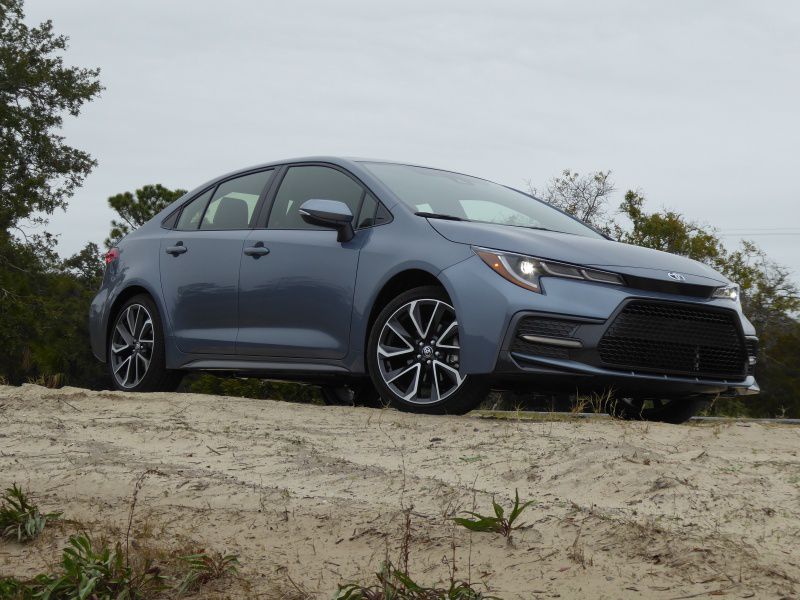
2020 Toyota Corolla ・ Photo by Ron Sessions
Who needs a compact four-door sedan? Even though some automakers are discontinuing small sedans to concentrate on more profitable crossovers and SUVs, others continue to see entry-level compact four-door cars with starting prices at or below $20,000 as a way to introduce new buyers to their brands. For example, Toyota says that one in four of Corolla sales are to first-time buyers. The overriding appeal of these compact sedans is a new car with a warranty for the price of used mid-size car with a few years under its belt and uncertain repair issues looming. Well over 1 million compact sedans were sold in the U.S. in 2019.
Both the Nissan Sentra and the Toyota Corolla sedan were newly redesigned for 2020. In recent years, both have been chasing the segment-leading Honda Civic in sales. Let’s see how the two popular compact sedans stack up against each other.
Styling and Design
While the Corolla and Sentra have traditionally leaned toward the practical side of design, both compact four-door sedans got significantly more stylish with their 2020 iterations. Compared to the 2019 model, the 2020 Corolla sports a lower roof, wider stance, modest wheel flares, and all-LED exterior lighting. Front-end appearance varies by trim, with the base L, LE, and XLE getting a large, downturned grille and jutting fascia, and SE and XSE trims receiving a smaller, electric-shaver-like grille, three-segment fascia, and chin spoiler. Neither Corolla grille is particularly attractive, but both impart a modern vibe.
The Sentra, on the other hand, captures the best aspects of the mid-size Maxima’s shape and distills them into a dynamic-looking, aspirational design. Call it a mini Maxima. The new Sentra is lower and wider than last year’s model. It displays an athleticism uncommon in the class with its deep-set V-motion grille, forward body rake, sculpted hood and flanks, and optional two-tone paint accenting its floating-roof design. On curb appeal alone, the Sentra is a winner.
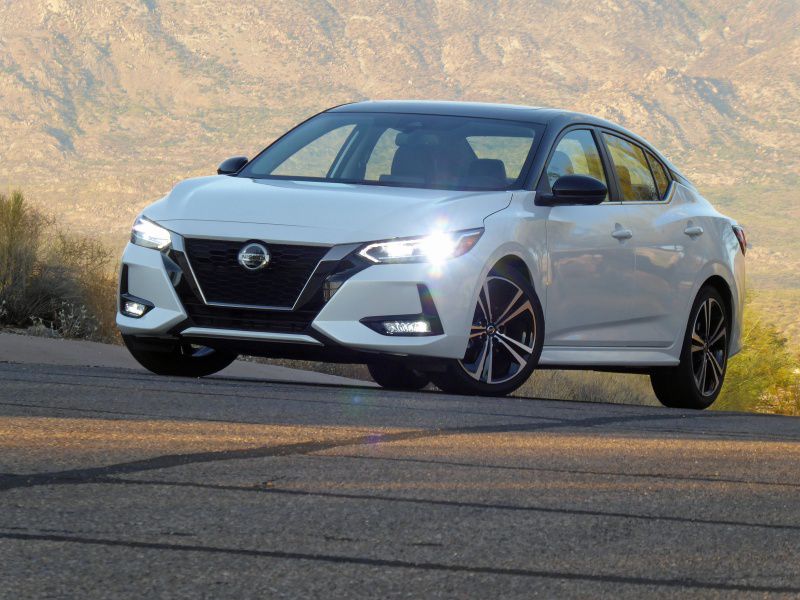
Photo by Ron Sessions
Comfort and Cargo
The 2020 Sentra is lower but wider, with no loss of interior space compared to its 2019 iteration. In a head to head with the 2020 Corolla sedan, the Sentra offers more rear legroom as well as greater hip- and shoulder room in the front and back. There’s more storage space inside the Sentra too, with handy cubbies for small items, snacks, and electronics in the center console. The Sentra’s space advantage continues to the trunk where the compact Nissan’s 14.3 cubic feet tops the Corolla sedan’s 13.1.
Inside, the overall layout and material quality of the Corolla and Sentra don’t shout cheap sedan. There are lots of soft-touch and wrapped surfaces in both with scratchy, hard plastic kept to a minimum. The front buckets, available in cloth, faux-leather, and — in the case of the Sentra — real leather skins, are everyday-comfortable with the Sentra getting extra points for its spine-supporting, NASA-inspired Zero Gravity front seats.
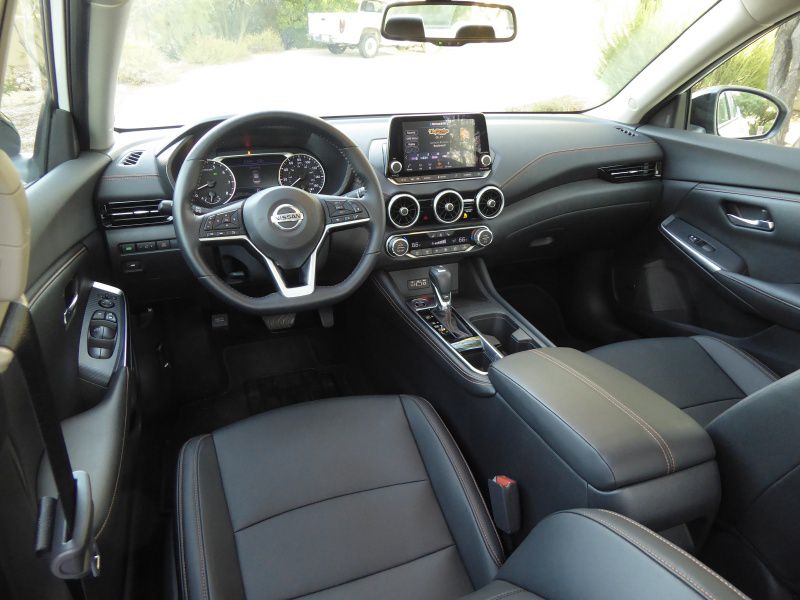
Photo by Ron Sessions
Infotainment
Toyota upgraded the Corolla’s infotainment system for 2020, moving to a 7-inch screen for the base L model and an 8-inch one for higher trims. The 2020 Corolla has Apple CarPlay cellphone mirroring and Amazon Alexa compatibility, a basic Scout GPS system that works off your cellphone, and an optional embedded navigation system for upper trims, but no Android Auto. A Verizon in-car Wi-Fi subscription is available. Upper trims add SiriusXM and HD radio to the basic six-speaker AM/FM stereo with an 800-watt, nine-speaker premium JBL optional.
The Sentra also upgrades to larger screens for 2020, with the SV and SR trims getting standard Apple CarPlay and Android Auto cellphone mirroring but no Amazon Alexa compatibility. The base S model’s four-speaker AM/FM stereo upgrades to a six-speaker system with SiriusXM in SV and SR models and an optional premium eight-speaker Bose system in the SR. Optional in-car Wi-Fi is available but no embedded navigation. Both the Corolla and Sentra systems feature voice control and easy-to-use analog volume and tuning knobs as well as shortcut buttons adjacent to the screen for quick access. The Sentra’s screen just looks classier, like something from a more expensive car, not an entry compact sedan.
Tie
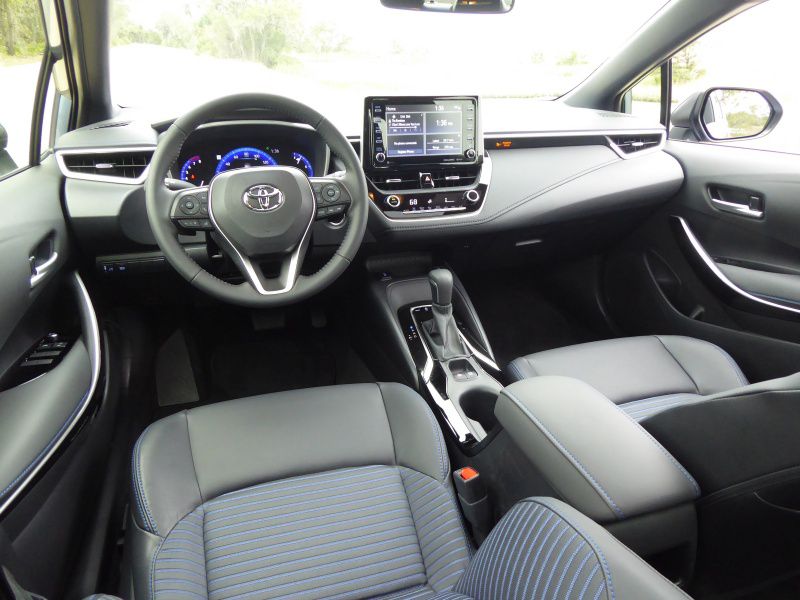
Photo by Ron Sessions
Safety and Technology
Mainstream automakers have been upgrading the safety tech in their vehicles lately, and the new Corolla and Sentra offer an impressive array of features either extra cost or simply unavailable a short time ago in this size and price class. Both the 2020 Corolla and Sentra come standard with automatic emergency braking with pedestrian protection, a forward-collision warning, a lane-departure warning, and high-beam assist.
The Corolla adds standard adaptive cruise control (not available on the base Sentra trim), lane trace assist with steering corrections and road sign recognition. Meanwhile, the Sentra brings standard blind-spot and rear cross-traffic monitoring (standard on only the top-line Corolla trims), a driver-alertness monitor, a rear-door alert, rear automatic braking, and an optional overhead around-view monitor. The Sentra also ups the airbag count from the 2020 Corolla’s eight to 10 with the addition of standard rear-seat side airbags.
Tie

Photo by Ron Sessions
Power and Performance
For 2020, Nissan dropped the Rogue Sport’s 149-horsepower 2.0-liter four-cylinder into the Sentra, replacing the 2019 compact sedan’s 1.8-liter four-cylinder a for 20 percent power boost. The more powerful 2020 Sentra, paired with its only available continuously variable automatic transmission (CVT), can now accelerate from zero to 60 mph in just over 9 seconds.
The 2020 Toyota Corolla sedan gives buyers three engine choices: a 139-hp 1.8-liter four-cylinder for L, LE, and XLE trims (found in the Eco version of the old Corolla); a new 169-hp 2.0-liter Dynamic Force four-cylinder shared with the Corolla hatchback in SE and XSE trims; and an Atkinson-cycle 1.8-liter four-cylinder combined with a pair of electric motor/generators to produce 121 system horsepower in the first-ever Corolla Hybrid. Both the 1.8-liter gas-powered Corolla and the gas-electric hybrid paired with a CVT can find 60 mph from rest in just over 10 seconds. The 169-hp 2.0-liter-powered Corolla, however, can accelerate to 60 mph in about 8 seconds flat. The Corolla SE and XSE with the 2.0-liter engine offers a choice of a six-speed manual gearbox with rev-matching downshifts or a wide-ratio Dynamic Shift CVT with a physical first gear for a more natural-feeling launch from rest.
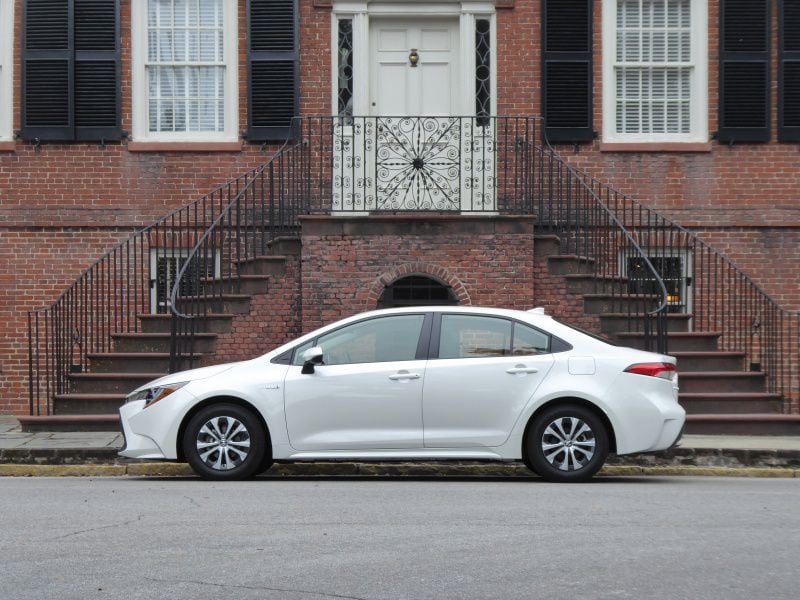
Photo by Ron Sessions
Fuel Economy
If making less frequent trips to the pump is a major goal, the 2020 Toyota Corolla has a decided edge over the new Nissan Sentra. With EPA estimates of 29 mpg city/39 mpg highway/33 mpg combined, the 2020 Sentra’s 2.0-liter four-cylinder offers fuel economy that’s competitive with other small sedans, including the Corolla’s base 139-hp 1.8-liter four-cylinder. But in addition to adding significantly more power, the Corolla’s upgrade 169-hp 2.0-liter four-cylinder actually bests the Sentra with EPA estimates of up to 31 mpg city/40 mpg highway/34 mpg combined.
The fuel economy champ in this small-sedan matchup is the new-for-2020 Corolla Hybrid. The first-ever Corolla Hybrid manages a Prius-like 53 mpg city/52 mpg highway/52 mpg combined EPA fuel-economy estimate.

Photo by Ron Sessions
Driving Dynamics
Both the 2020 Sentra and Corolla are all-new under the skin, built on new global platforms with more rigid body structures and with independent rear suspensions replacing the previous torsion-beam systems. These suspensions give the new Corolla and Sentra more composure than before over choppy, uneven road surfaces, with the Corolla enjoying a slight advantage over the Sentra in ride quality.
Both cars have nicely weighted steering, with the Sentra’s dual-pinion setup a bit quicker for slicing into turns and the Sentra’s brakes give confident, responsive stopping ability from speed. However, neither the Corolla nor Sentra rises to the level of dynamic driving pleasure embodied in some other compact sedans such as the Mazda3, Honda Civic, or Volkswagen Golf/Jetta. The Corolla with the more-powerful Dynamic Force 2.0-liter engine has the edge in acceleration over the Sentra, but both the Sentra and Corolla four-cylinders, while fine for the everyday commute, sound a bit buzzy when pressed at higher revs.
Tie
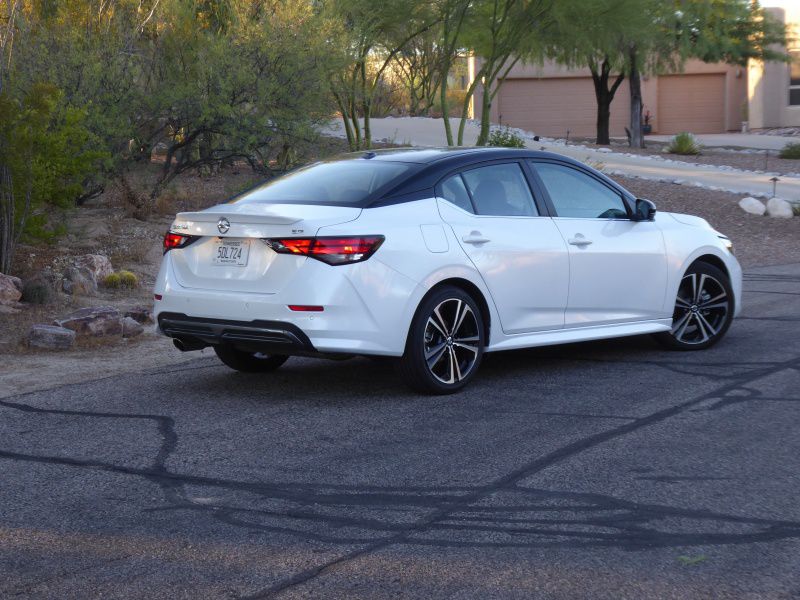
Photo by Ron Sessions
Value
With prices starting just under $20,000, both the 2020 Toyota Corolla and Nissan Sentra offer a compelling value proposition. Both come standard with a long list of safety features and multimedia infotainment features that would have cost thousands of dollars more just a few years ago, if available at all in compact sedans in this price range.
The 2020 Corolla, always a sound choice with Toyota’s reputation for durability and good resale value, shines with standard adaptive cruise control, road-sign assist, a choice of powerplants and transmissions and a convincing high-mpg hybrid alternative to a Prius. The 2020 Sentra, however, rolls with an even more extensive roster of standard safety technology that costs extra or is not available on the Corolla, including blind-spot and rear cross-traffic monitoring, rear-seat side airbags, rear automatic braking, a driver alertness monitor, rear door alert, and an available around-view monitor. The 2020 Sentra also comes with Android Auto, a feature those buyers who don’t have an iPhone should know the Corolla doesn’t get until the 2021 model. In terms of bang for the buck, the 2020 Nissan Sentra shines just a bit brighter than the Toyota Corolla.
Nissan Sentra
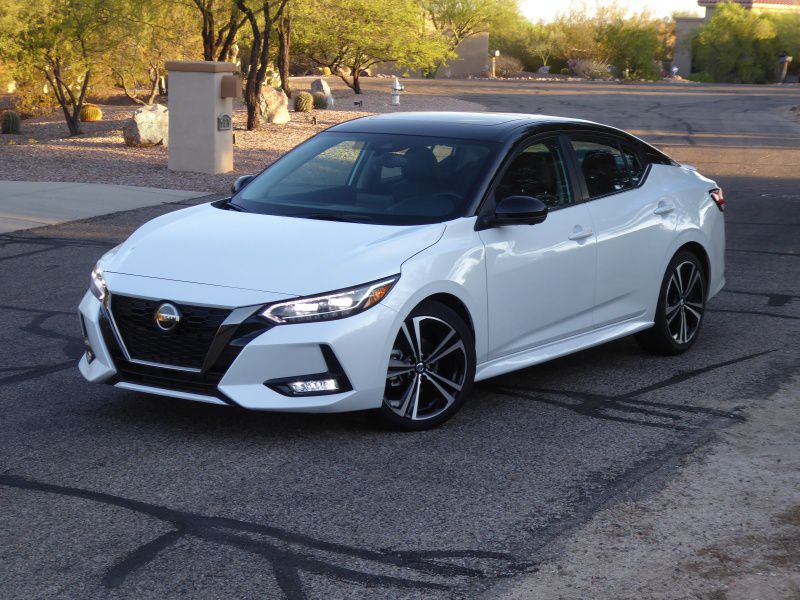
Photo by Ron Sessions
Verdict
This one is too close to call. Both the Sentra and Corolla offer improved driving dynamics, nicely appointed interiors, a large chunk of standard safety and infotainment technology, and good fuel economy, all in compact and easy-to-maneuver packages. If you are one of the decreasing number of buyers looking for a manual-transmission car, the Corolla is your only choice. Ditto for a compact sedan with a fuel-sipping gas-electric hybrid drivetrain, as the Sentra only offers a gas engine at this time. And in a stoplight grand prix, the Corolla with the uplevel gas engine will out-drag the Sentra to the next stoplight.
That said, in addition to more roominess and standard safety features, the Sentra offers just a bit more design pizzaz than the Corolla, both inside and out. You don’t need that for your daily commute, but it’s very, very nice to steal of peek of it sitting in your driveway — especially when decked out in two-tone paint. You really can’t go wrong with either the Nissan Sentra or Toyota Corolla.
Tie
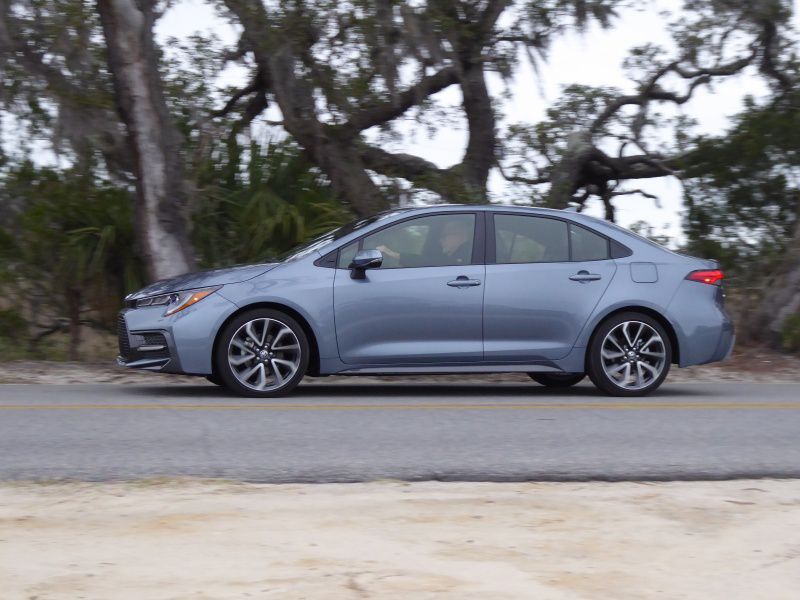
Photo by Ron Sessions